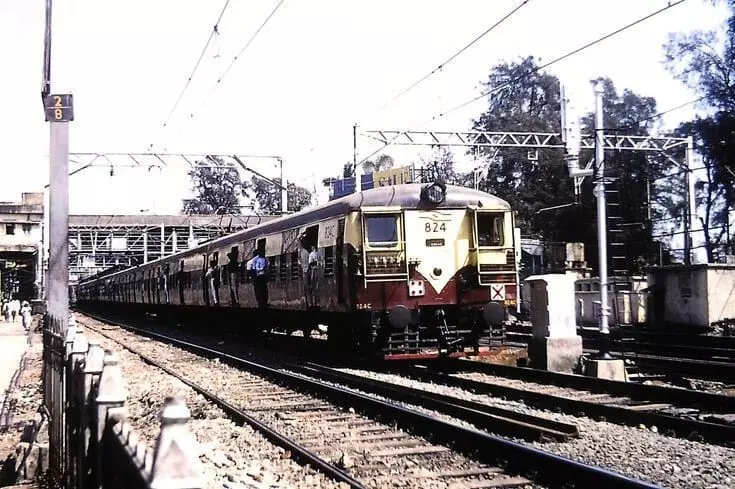Raipur/Delhi. With the invention of the wheel, the world started moving many times faster. This speed got a new direction in September 1825, when the world’s first train started its journey. In this sequence, 28 years later, on April 16, 1853, the day also came when the first train was run in India. About 72 years later, on 3 February 1925, Indian Railways added another chapter and created a new record by running an electric train for the first time from Chhatrapati Shivaji Maharaj Terminus (CSMT) to Kurla, Mumbai.
Now in the year 2025, with the completion of 100 years of rail electrification in India, India is on the verge of 100% electrification of its broad gauge network which is a milestone in the achievements of Indian Railways. This achievement is as historic as the first train journey in India and symbolizes a century of progress in the electrification of Indian Railways.
Towards electrification: A century of journey
Within just 28 years of the world’s first rail operation, trains started running in India. However, India took longer to adopt electric engines. The first electric passenger train ran in Germany in 1879, but it took 46 years for the technology to reach India. The world’s first electric train was run in 1879, while India introduced this facility for the first time in 1925.
Electric engines proved their utility in a very short time. These engines were more powerful, faster and efficient. With less maintenance, they were pollution-free and could easily pull heavy trains on steep slopes. In the initial days, the cost of electrification was high, but it proved to be especially useful for urban traffic and metropolises like Mumbai.
Electrification in Mumbai: The First Step
In the early years of the 20th century, it became necessary to find an effective and efficient solution for traffic for the rapidly increasing population of Mumbai. Steam engines were unable to handle the steep slopes leading to Pune and Nasik. This further increased the need for electrification.
In 1904, W.H. White, Chief Engineer of the Bombay Presidency Government, proposed to electrify the two major rail networks in Mumbai – the Great Indian Peninsula Railway (GIP) and the Bombay Baroda & Central India Railway (BB&CI). Though the project was temporarily halted due to World War I, by 1920, plans to electrify the Bombay-Pune, Igatpuri and Vasai lines were approved.
On 3 February 1925, India’s first electric train ran on 1500 volt direct current (DC) covering a distance of 16 km between Chhatrapati Shivaji Terminus and Kurla. This marked the beginning of clean and modern transport by Indian Railways. With this move, India became the 24th country in the world and the third in Asia to operate electric rail services.
Electrification in South India
Along with Mumbai, South India also took steps towards electrification. The South Indian Railway (SIR), the major railway network in South India, electrified its suburban network on the 1500 volt DC system. The line from Madras Beach (now Chennai) to Tambaram was completed by 1931. This section is one of the few metre gauge electrified routes in India.
By the time of India’s independence in 1947, only 388 km of rail lines in the country were electrified, mainly concentrated around Mumbai and Madras.
Beginning of electrification in Eastern India
While Mumbai took the lead in electrification, the process started late in Eastern India, mainly due to events like the World Wars and the Great Depression of the 1930s. The process of electrification in Kolkata (then Calcutta) gained momentum in the 1950s. In 1954, Indian Railways studied the European electrification model and chose the 3000 volt DC system for the region. In December 1957, the first electrified track in eastern India was inaugurated between Howrah and Sheoraphuli.
In November 1957, Indian Railways adopted 25 kV AC system as standard for electrification
At the same time, SNCF of France developed a 25,000 volt AC system, which was initially viewed with skepticism. In 1959, the system was successfully tested on the Rajkharsawan-Dangposhi section. In November 1957, Indian Railways adopted 25 kV AC system as standard for electrification, making India the second country after the Soviet Union to do so.
A strong step towards clean transportation: Rail electrification has a profound and long-term impact on the nation. It provides a clean and green mode of transport, thereby promoting environmental protection. With improved haulage capacity and line haul cost, it makes the rail network more efficient and cost-effective. In addition, it contributes to sustainable development by reducing carbon emissions. Reduced dependence on crude oil also ensures saving of precious foreign exchange, thereby ensuring the economic strength of the nation.
Electrification across India: A new era
By 1966, more than half of the freight transport in the Eastern and South-Eastern Railway zones was powered by electric traction. Howrah
